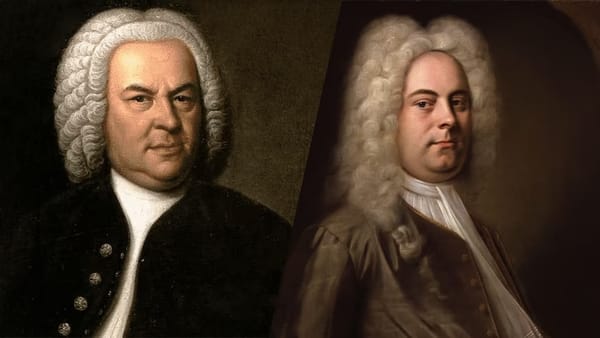Mastering the Baton: The Essential Role of Conductors in Classical Music
Discover the art of conducting, from its history to the skills required. Learn how maestros interpret scores, lead orchestras, and create unforgettable performances in this deep dive into the conductor’s world.

The conductor stands at the podium, baton in hand, commanding the attention of an entire orchestra. To the untrained eye, the role of the conductor might seem mysterious—what exactly are they doing up there? Are they merely keeping time, or is there more to their gestures and expressions? The truth is, conducting is a complex and multifaceted art form that blends leadership, interpretation, and technical skill. In this article, we’ll explore the art of conducting, its history, the skills required, and its profound impact on the performance of classical music.
A Brief History of Conducting
The role of the conductor as we know it today is a relatively modern development. In the Baroque and Classical periods, ensembles were often led by a musician within the group, such as the first violinist or the harpsichordist. These leaders would keep time and guide the ensemble, but their role was more functional than interpretive.
The 19th century saw the rise of the conductor as a distinct figure, largely due to the increasing complexity of orchestral music. Composers like Beethoven, Berlioz, and Wagner wrote works that demanded greater precision and coordination, leading to the need for a dedicated leader. Figures like Felix Mendelssohn and Hans von Bülow became some of the first professional conductors, setting the stage for the modern maestro.
By the 20th century, conducting had evolved into a highly respected art form, with legendary figures like Arturo Toscanini, Leonard Bernstein, and Herbert von Karajan becoming household names. Today, conductors are not only interpreters of music but also cultural ambassadors, educators, and innovators.
The Conductor’s Role: More Than Just Keeping Time
At its core, conducting is about communication. The conductor is the bridge between the composer’s score and the orchestra’s performance. Here are some of the key responsibilities of a conductor:
- Interpretation
The conductor’s primary task is to interpret the composer’s intentions. This involves making decisions about tempo, dynamics, phrasing, and balance. A great conductor brings a unique perspective to the music, shaping it in a way that feels both fresh and faithful to the score. - Leadership
An orchestra is a complex ensemble of individual musicians, each with their own ideas and egos. The conductor must unify these voices, creating a cohesive and harmonious performance. This requires not only musical expertise but also strong interpersonal skills. - Technical Skill
Conductors use a combination of gestures, facial expressions, and body language to communicate with the orchestra. The baton is their primary tool, but every movement has meaning. Clear and precise gestures are essential for conveying tempo, dynamics, and articulation. - Rehearsal Preparation
A conductor’s work begins long before the performance. They spend hours studying the score, analyzing its structure, and planning how to approach rehearsals. During rehearsals, they work with the orchestra to refine the interpretation and address any technical challenges. - Performance Energy
In a live performance, the conductor’s energy and charisma can elevate the music to new heights. They act as a guide, helping the orchestra navigate the emotional and technical demands of the piece.
The Skills of a Great Conductor
What makes a great conductor? While technical proficiency is essential, there are several other qualities that set exceptional maestros apart:
- Musical Knowledge
A deep understanding of music theory, history, and repertoire is crucial. Conductors must be able to analyze scores, identify key themes, and understand the stylistic nuances of different composers and periods. - Ear Training
Conductors must have an acute sense of hearing, able to detect even the slightest imperfections in pitch, rhythm, or balance. This allows them to make precise adjustments during rehearsals and performances. - Communication Skills
Conductors must be able to convey their ideas clearly and effectively, both verbally and non-verbally. This includes not only their gestures but also their ability to inspire and motivate the orchestra. - Emotional Intelligence
A great conductor understands the emotions behind the music and can convey them to the orchestra and the audience. They must also be sensitive to the needs and personalities of the musicians they work with. - Physical Stamina
Conducting is physically demanding, requiring hours of rehearsal and performance. Conductors must maintain focus and energy throughout, often while standing for long periods.
The Conductor’s Toolkit: Gestures and Techniques
The conductor’s gestures are their primary means of communication. Here are some of the key techniques they use:
- The Baton
The baton is an extension of the conductor’s arm, used to indicate tempo and rhythm. Its movements are precise and deliberate, helping the orchestra stay together. - Beat Patterns
Conductors use specific patterns to indicate the meter of the music. For example, a 4/4 time signature is typically conducted with a downbeat, two side beats, and an upbeat. - Dynamics
The size and intensity of the conductor’s gestures indicate dynamics. Larger, more expansive movements suggest forte (loud), while smaller, more restrained gestures suggest piano (soft). - Cueing
Conductors use their hands, eyes, and body language to cue individual musicians or sections. This is especially important in complex passages where timing is critical. - Facial Expressions
A conductor’s face can convey a wealth of information, from the mood of the music to specific instructions for the orchestra.
The Conductor’s Impact on Performance
The influence of a conductor on an orchestra’s performance cannot be overstated. A great conductor can transform a good orchestra into a great one, bringing out nuances and emotions that might otherwise go unnoticed. Here are some ways a conductor shapes the performance:
- Tempo and Timing
The conductor sets the tempo, ensuring that the orchestra plays together and maintains a consistent pace. They also make decisions about rubato (subtle tempo changes) and phrasing. - Balance and Blend
The conductor ensures that each section of the orchestra is heard in the right proportion. This involves balancing the dynamics and blending the timbres of different instruments. - Emotional Depth
A great conductor brings out the emotional core of the music, helping the orchestra and the audience connect with the piece on a deeper level. - Cohesion and Unity
The conductor unifies the orchestra, ensuring that every musician is working toward the same vision. This creates a cohesive and polished performance.
Famous Conductors and Their Legacies
Throughout history, certain conductors have left an indelible mark on the world of classical music. Here are a few legendary maestros and their contributions:
- Leonard Bernstein
Bernstein was not only a brilliant conductor but also a composer, educator, and cultural icon. His passionate and dynamic performances brought classical music to a wider audience. - Herbert von Karajan
Known for his precision and perfectionism, Karajan was one of the most influential conductors of the 20th century. He served as the principal conductor of the Berlin Philharmonic for over three decades. - Arturo Toscanini
Toscanini was renowned for his strict adherence to the score and his fiery temperament. His performances were marked by their intensity and clarity. - Marin Alsop
A trailblazer for women in conducting, Alsop has broken barriers and inspired a new generation of musicians. She is known for her innovative programming and commitment to music education.
Conclusion
The art of conducting is a profound and multifaceted discipline that lies at the heart of classical music. It requires a unique blend of technical skill, musical knowledge, and emotional intelligence. Through their gestures, interpretations, and leadership, conductors bring the composer’s vision to life, creating performances that resonate with audiences and stand the test of time. Whether you’re a musician, a music lover, or simply curious about the world of classical music, understanding the role of the conductor can deepen your appreciation for this timeless art form.





